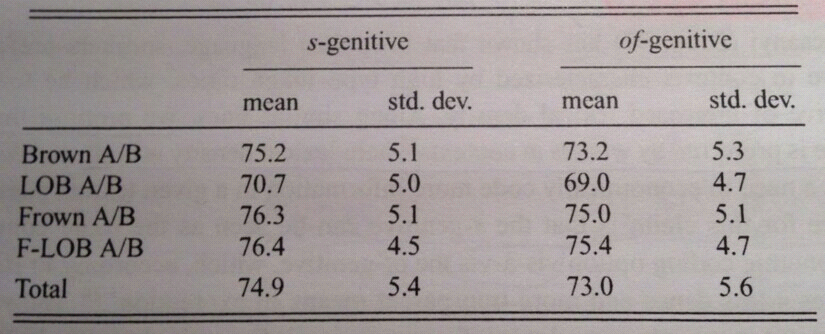The s-genitive is preferred when the context has high lexical density, i.e. when the context contains various word types (Hinrichs and Szmrecsanyi 2007). Hinrichs and Szmrecsanyi (2007: 457) explain that the reason could be that “the s-genitive can be seen as the more compact and thus economic coding option vis-à-vis the of-genitive.”
In order to examine whether the s-genitive is preferred in contexts with high type-token ratio, Hinrichs and Szmrecsanyi (2007) looked for genitive constructions in the corpora which have 50 words before and 50 after them, and calculated how many different word types are in the passages (which are around 100 words). Results are displayed below:

Table 2. Mean type-token ratio of text passage where genitive slot is embedded by corpus and genitive type (Hinrichs and Szmrecsanyi 2007: 458)
In table 2 you can see that s-genitives appear in the contexts that have a high type-token ratio (74.9), while of-genitives are associated with lower type-token ratios (73.0). The results accord with the hypothesis that s-genitives are preferred in those contexts with high type-token ratios. Hinrichs and Szmrecsanyi (2007: 463) also observe that the odds of using an s-genitive in context increase by 80% when the type-token ratio of the context increases by 10 (- for example, comparing a context with a type-token ratio of 60 with a context with a type-token ratio of 50).
Created with the Personal Edition of HelpNDoc: Create iPhone web-based documentation